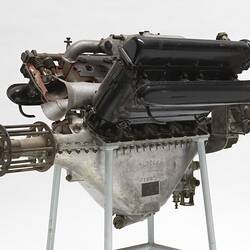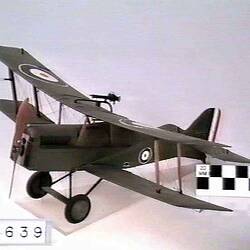Summary
Aircraft History
The SE.5 was designed at the Royal Aircraft Factory in the UK in 1916. The improved SE.5a version entered service with Royal Flying Corps in 1917. It soon proved to be a highly effective fighting aircraft with many leading 'aces' such as 'Mick' Mannock and Albert Ball, flying the type. The in-line 200 horsepower Wolseley Viper or Hispano Suiza engine was much easier to handle than the rotary fitted to the Sopwith Camel. No. 2 Squadron, Australian Flying Corps began using the SE.5a in France in 1917 and continued to operate the type until November 1918. It also served with No. 6 Squadron AFC for training duties in the UK. In 1921, the new Royal Australian Air Force received a delivery of SE.5a as part of the Imperial Gift of war surplus equipment from Britain. Some of these were never put into service but others were used at Point Cook, Victoria with Nos 1 and 3 Squadrons. The SE.5a was taken out of RAAF service in 1928. One example was presented to the Australian War Memorial.
Model History
This model was donated to the Museum prior to 1993. It is made of crude copperplate and is missing rudder and propeller. Standard of workmanship is similar to First World War 'trench art'.
More Information
-
Collecting Areas
-
Acquisition Information
Donation from Unknown, Before 22 Mar 1995
-
Date Depicted
-
Classification
Air transport, Aircraft, Model propeller aircraft - military
-
Category
-
Discipline
-
Type of item
-
Overall Dimensions
470 mm (Width), 610 mm (Depth)
-
Keywords
Aircraft, Reconnaissance Aircraft, Military Aircraft, Model Aeroplanes, Scale Models, Wars & Conflicts, World War I, 1914-1918



